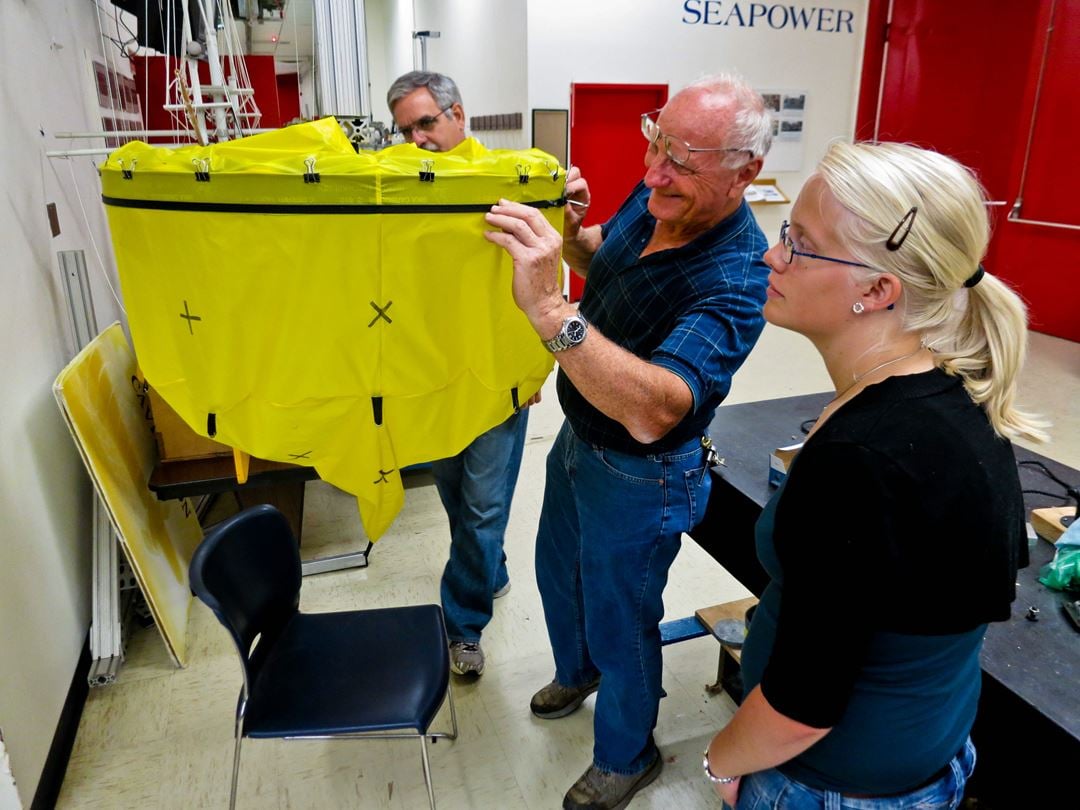In a closed system, the farmer can target increased control of how the fish are exposed to pathogens, parasites, algaes or pollution, by controlling the flow and quality of water going in and out of the containment volume in an attempt to establish a more bio-secure production environment. The use of these systems can also contribute to changes in production regimes, e.g. larger smolts and a shorter on-growing phase in sea.

|
| Senior Scientist Zsolt Volent and PhD student Ida Strand studies the bag model ready for testing in the towing tank. |
Very few ocean structures exist with large, heavily compliant submerged components, and there is presently limited existing knowledge about how aquaculture systems with flexible closed cages will respond to external sea loads. A closed bag will experience an increase in hydrodynamic drag compared to a net based structure. In addition, the flexibility and deformation of the bag is closely coupled to the hydrodynamic forces, making the hydrodynamic load far more difficult to understand than that for a rigid structure. Therefore, techniques to estimate external forces, dynamic movements and internal stresses need to be in order to limit the risk of fish escaping due to structural collapse or operational failures.
In addition to the external forces and deformation issues, the enclosed body of water must be properly maintained to obtain good water quality, fish welfare and high bio-security. It is expected that the flow patterns within the containment bag will be difficult to understand since it will be dependent on shape and pumping rates. The flexible structure will have to be designed with reasonable water flow to supply dissolved oxygen and remove of carbon dioxide and waste products (solid and dissolved).
Work/preliminary results.

|
| Experimental overview: The first set of experiments looked at the drag force and deformation of a closed flexible bag in uniform steady current. Four different geometries and six different filling levels were investigated. |
Experiments with small scale models of flexible bags have been conducted together with United States Naval Academy at their towing tank in Annapolis, USA. Four different bag geometries were investigated, and each geometry was tested with different filling levels in order to study how the bag performes when it is allowed to deform.

|
| Laboratory setup: The model is attached to a towing carriage trough a load cell that measures the drag force. Three cameras are used to capture the bag deformation. |

|
| Preliminary results: The drag force for different combinations of geometry, orientation and filling level. |
